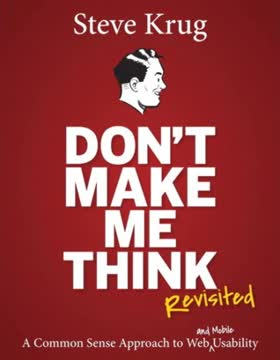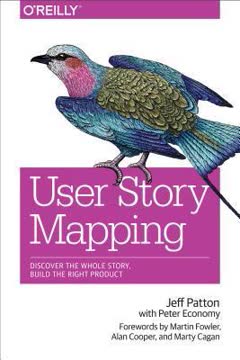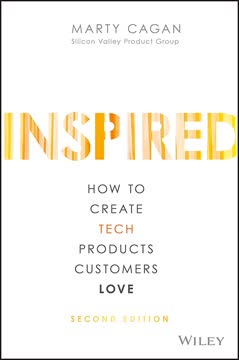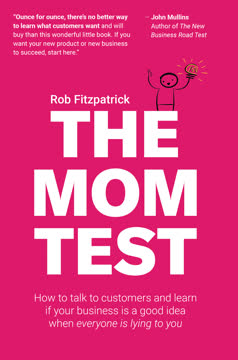Key Takeaways
1. Product Owner: The Visionary and Decision-Maker in Agile Development
The product owner is a visionary who can envision the final product and communicate the vision.
Multifaceted role. The Product Owner in Scrum is a crucial role that combines the responsibilities of a traditional product manager, project manager, and customer representative. This individual is responsible for:
- Creating and maintaining the product vision
- Managing the product backlog
- Planning releases
- Collaborating with stakeholders
- Making key decisions about product features and priorities
Essential qualities. A successful Product Owner should possess:
- Strong leadership and communication skills
- Deep understanding of customer needs and market trends
- Ability to make tough decisions and prioritize effectively
- Commitment to close collaboration with the development team
2. Crafting a Compelling Product Vision: The Blueprint for Success
Vision is the art of seeing things invisible.
Guiding light. A product vision serves as the north star for the entire development effort, providing direction and inspiration for the team. An effective vision should:
- Answer key questions about target customers, product benefits, and market positioning
- Be shared and understood by all team members and stakeholders
- Remain broad enough to allow for creativity and adaptation
Vision creation. Techniques for developing a compelling vision include:
- Prototypes and mock-ups
- Personas and scenarios
- Vision box and trade journal review
- Kano Model for identifying delighters and core features
3. The Minimal Marketable Product: Delivering Value Faster
If you give a mediocre idea to a great team, they will either fix it or throw it away and come up with something that works.
Focus on essentials. The Minimal Marketable Product (MMP) concept emphasizes delivering the smallest possible set of features that still provides value to customers. Benefits of this approach include:
- Faster time-to-market
- Reduced development costs
- Earlier customer feedback
- Improved risk mitigation
Iterative growth. By starting with an MMP and iterating based on customer feedback, teams can:
- Avoid overengineering and feature bloat
- Adapt quickly to changing market conditions
- Build a product that truly meets customer needs
4. Mastering the Product Backlog: The DEEP Approach
The product backlog is beautifully simple—a prioritized list of the outstanding work necessary to bring the product to life.
DEEP characteristics. An effective product backlog should be:
- Detailed appropriately: Higher priority items are more detailed
- Estimated: Items are sized to facilitate planning
- Emergent: The backlog evolves as new information is gathered
- Prioritized: Items are ordered based on importance and value
Collaborative grooming. Regular backlog grooming sessions involving the entire Scrum team help to:
- Discover and describe new items
- Refine existing items
- Prioritize the backlog
- Prepare items for upcoming sprints
5. Effective Release Planning: Balancing Time, Cost, and Functionality
Planning ... is a quest for value.
Flexible approach. Agile release planning focuses on delivering value while maintaining flexibility. Key principles include:
- Fixing time and cost while flexing functionality
- Maintaining consistent quality throughout development
- Using a product roadmap to guide long-term planning
Planning techniques. Effective release planning involves:
- Setting realistic release dates based on the product vision
- Using velocity to forecast progress
- Creating and maintaining a release burndown chart
- Adapting the plan based on customer feedback and changing priorities
6. Velocity and Release Burndown: Tracking Progress and Forecasting
Working software is the primary measure of progress.
Velocity measurement. Velocity is a key metric in Scrum, representing the amount of work a team can complete in a sprint. It is used to:
- Track team progress
- Forecast future sprint capacities
- Aid in release planning
Release burndown. The release burndown chart or bar provides a visual representation of project progress, showing:
- Remaining effort in the product backlog
- Work completed over time
- Projected completion date based on current velocity
These tools help teams identify potential issues early and make necessary adjustments to meet release goals.
7. Early and Frequent Releases: The Key to Customer Satisfaction
Our highest priority is to satisfy the customer through early and continuous delivery of valuable software.
Continuous feedback loop. Releasing product increments early and frequently provides numerous benefits:
- Validates product assumptions with real user feedback
- Allows for rapid course correction if needed
- Builds customer trust and engagement
- Accelerates learning and innovation
Implementation challenges. To support frequent releases, teams must:
- Maintain high software quality standards
- Implement efficient deployment processes
- Develop features in small, releasable increments
- Establish clear communication channels with customers
8. Scaling Agile: Strategies for Large Projects and Organizations
Use one product backlog.
Scaling considerations. As projects and organizations grow, additional challenges arise in implementing Scrum. Key strategies for scaling include:
- Maintaining a single product backlog, even for large projects
- Implementing a hierarchy of Product Owners for complex products
- Extending the grooming horizon to look ahead 2-3 sprints
- Providing team-specific views into the product backlog
Organizational alignment. Successful scaling requires:
- Strong leadership support
- Clear communication channels between teams
- Consistent processes and tools across the organization
- Regular inter-team coordination and collaboration
Last updated:
FAQ
What's "Agile Product Management with Scrum" about?
- Focus on Product Owners: The book provides a comprehensive guide for product owners in Scrum, detailing their roles, responsibilities, and how they can effectively manage product backlogs.
- Practical Advice: It offers practical insights and techniques for product owners to maximize the value of their products through effective Scrum practices.
- Vision and Leadership: The book emphasizes the importance of having a strong product vision and the leadership qualities required to guide a Scrum team.
- Iterative and Incremental Approach: It explains how to use Scrum's iterative and incremental nature to create products that customers love.
Why should I read "Agile Product Management with Scrum"?
- Role Clarity: It provides clarity on the product owner role, which is often misunderstood or underrepresented in agile projects.
- Expert Insights: The book is written by Roman Pichler, a leading expert in agile product management, offering valuable insights and real-world examples.
- Comprehensive Guide: It covers all aspects of agile product management, from envisioning the product to release planning and collaboration in sprint meetings.
- Practical Tools and Techniques: Readers will gain access to practical tools and techniques that can be directly applied to their Scrum projects.
What are the key takeaways of "Agile Product Management with Scrum"?
- Product Owner Role: Understanding the multifaceted role of the product owner and the importance of empowerment and collaboration.
- Vision and Simplicity: The significance of having a clear product vision and focusing on simplicity to create minimal marketable products.
- Release Planning: The importance of fixing time and quality while flexing functionality to ensure successful product releases.
- Continuous Improvement: Emphasizing the need for regular reflection and adaptation through sprint retrospectives and stakeholder feedback.
What are the best quotes from "Agile Product Management with Scrum" and what do they mean?
- "Vision is the art of seeing things invisible." This quote highlights the importance of having a clear and compelling product vision that guides the development process.
- "Good business leaders create a vision, articulate the vision, passionately own the vision, and relentlessly drive it to completion." It underscores the leadership qualities required of a product owner to successfully guide a Scrum team.
- "Our highest priority is to satisfy the customer through early and continuous delivery of valuable software." This reflects the agile principle of delivering value to customers through frequent releases and feedback loops.
- "Plans are nothing; planning is everything." This emphasizes the importance of the planning process in adapting to change and ensuring project success.
How does Roman Pichler define the product owner role in "Agile Product Management with Scrum"?
- Central Role: The product owner is the central figure responsible for managing the product backlog and ensuring the value of the work performed by the team.
- Visionary and Doer: They must be both a visionary who can envision the final product and a doer who sees the vision through to completion.
- Leader and Team Player: The product owner provides guidance and direction while collaborating closely with the Scrum team.
- Empowered and Committed: They must have the authority to make decisions and be fully committed to the development effort.
What practical advice does "Agile Product Management with Scrum" offer for product backlog management?
- DEEP Qualities: The product backlog should be Detailed Appropriately, Estimated, Emergent, and Prioritized.
- Collaborative Grooming: Product backlog grooming is a collaborative process involving the entire Scrum team to ensure clarity and buy-in.
- Prioritization Factors: Prioritize backlog items based on value, knowledge, uncertainty, risk, releasability, and dependencies.
- Just-in-Time Detailing: Prepare just enough items just in time for the upcoming sprint to maintain flexibility and adaptability.
How does "Agile Product Management with Scrum" suggest handling nonfunctional requirements?
- Early Detailing: Global nonfunctional requirements should be detailed early on to avoid impacting product success.
- Incorporation in Definition of Done: Include nonfunctional requirements in the definition of done to ensure every increment meets quality standards.
- Local Requirements: Attach local nonfunctional requirements directly to specific functional requirements as constraints.
- Continuous Management: Regularly review and manage nonfunctional requirements as part of the product backlog grooming process.
What does "Agile Product Management with Scrum" say about release planning?
- Fix Time and Quality: The book advises fixing time and quality while allowing functionality to be flexible to meet release goals.
- Early and Frequent Releases: Emphasizes the importance of releasing product increments early and frequently to gather customer feedback.
- Velocity Tracking: Use velocity as a measure of the team's capacity to plan and forecast project progress.
- Release Burndown: Utilize release burndown charts to track and adapt the project based on remaining effort and time.
How does "Agile Product Management with Scrum" recommend collaborating in sprint meetings?
- Active Participation: Product owners should actively participate in sprint meetings to provide feedback and ensure alignment with the product vision.
- Definition of Done: Establish a clear definition of done to guide the team's work and ensure quality.
- Sprint Review: Use sprint review meetings to gather stakeholder feedback and adapt the product accordingly.
- Sprint Retrospective: Participate in sprint retrospectives to identify improvement measures and enhance team collaboration.
What are the common mistakes in product ownership according to "Agile Product Management with Scrum"?
- Underpowered Product Owner: Lacking the necessary authority and support to make decisions and align stakeholders.
- Overworked Product Owner: Being overburdened with responsibilities, leading to bottlenecks and project delays.
- Distant Product Owner: Working separately from the team, resulting in miscommunication and misalignment.
- Proxy Product Owner: Using a placeholder for the actual product owner, causing delays and conflicts.
How does "Agile Product Management with Scrum" address transitioning into the product owner role?
- Know Yourself: Reflect on your skills and identify areas for development to effectively transition into the role.
- Develop and Grow: Embrace the agile work ethos and continuously improve through training and feedback.
- Get a Coach: Benefit from coaching or an apprenticeship model to learn the ropes and gain confidence.
- Ensure Sponsorship: Secure management support and empowerment to effectively fulfill the product owner responsibilities.
What organizational changes does "Agile Product Management with Scrum" suggest for successful product ownership?
- Recognize Importance: Senior management must recognize the authority and impact of the product owner role.
- Select Right Product Owners: Carefully choose product owners based on the product, domain, and project size.
- Empower and Support: Provide training, coaching, and empowerment to help product owners succeed.
- Sustain Application: Develop organizational capabilities to grow and support product owners, including career paths and development programs.
Review Summary
Agile Product Management with Scrum receives mixed reviews, with an average rating of 3.83 out of 5. Many readers find it helpful for understanding the Product Owner role, especially for beginners. The book is praised for its clear explanations and practical advice. However, some criticize it for being too basic or lacking depth in certain areas. Readers appreciate the common mistakes sections and the focus on the Product Owner's responsibilities. Some suggest it's best as a quick reference or introduction to the role rather than a comprehensive guide.
Similar Books










Download PDF
Download EPUB
.epub digital book format is ideal for reading ebooks on phones, tablets, and e-readers.






